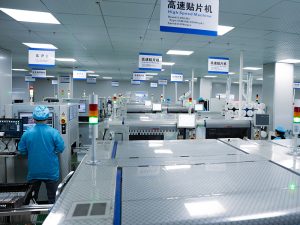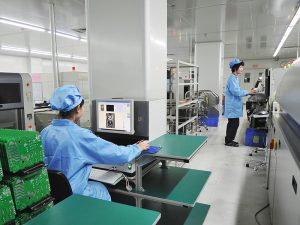目录
ToggleElectronic manufacturing companies operate in an industry that can be described as a powerhouse. This industry brings electronic systems, components, and devices to life for both industrial machinery and consumer electronics. This industry is driven by the growing demand for smart, connected devices and is based on dynamic technological advancements. Despite challenges such as sustainability concerns, supply chain disruptions, and competition, electronic manufacturing companies must adopt digital transformation continuously. Smart manufacturing could not be of greater relevance to electronic manufacturing companies.
Features of Smart Electronic Manufacturing

- There are four main aspects or features of smart electronic manufacturing. The first is smart services. Here, electronic manufacturing companies provide intelligent, post-purchase services through upgrading, maintaining, and remotely monitoring electronic products.
- The second feature is smart product design. Here, electronic manufacturing companies use Computer-Aided Engineering (CAE) and Computer-Aided Design (CAD) to digitally design electronic products, intending to realize optimization and iteration.
- The third feature is smart production. This involves the implementation of intelligent and automated production of electronic materials through intelligent equipment, automated production lines, and smart factories.
- The fourth feature is smart logistics management. This involves using Transportation Management Systems (TMS) and Warehouse Management Systems (WMS) for the intelligent transportation, storage, and distribution of electronic products.
The Pillars of Smart Manufacturing Solutions
Smart manufacturing solutions are anchored on six key pillars; connectivity, integration, automation, data analytics, cyber security, and sustainability.
- The pillar of connectivity underscores the importance of ensuring that all equipment and systems in the manufacturing process can communicate with each other. The objective here is to create a network that promotes data transfer, meaning better collaboration and coordination.
- Integration in smart manufacturing essentially refers to the fusion between digital technology and physical operations. The culmination is an interconnected system that controls and monitors bodily processes.
- The remarkable efficiency that characterizes smart manufacturing can be attributed to automation. Automated systems help in the streamlining of repetitive activities. It also frees workers to focus on high-value activities.
- Data analytics helps manufacturing companies gain deeper business insight. It allows companies to be proactive in terms of their approach as they can postulate trends and patterns.
- Cyber security ensures that there is data security across the interconnected devices. Important to note is that manufacturing environments are complex and as such, it is imperative to have a robust system of managing the risks associated with IoT devices.
- The goal of sustainability in smart manufacturing is to ensure that manufacturers can reduce emissions and minimize resource consumption through leveraging advanced technologies. This pillar demonstrates that smart manufacturing is not merely about technologies; it extends to what manufacturers can do with these technologies.
Conclusion

Summarily, it is important to understand the features and pillars of smart manufacturing to appreciate its role, relevance, and application. Considering the features and pillars highlighted in this article, it can be concluded that smart manufacturing is transforming manufacturing industries into an economic powerhouse. It will be interesting to watch how this aspect of manufacturing develops even further.
0